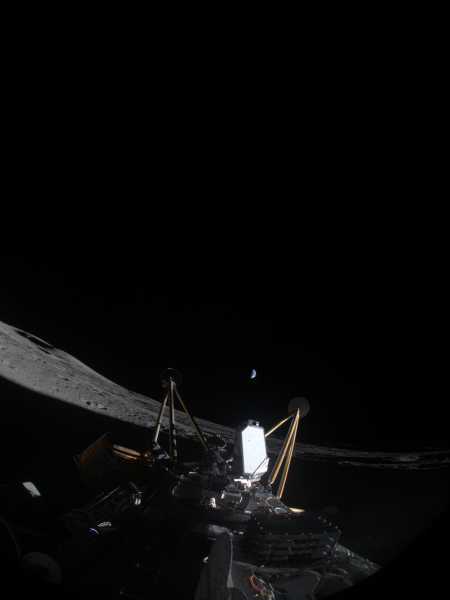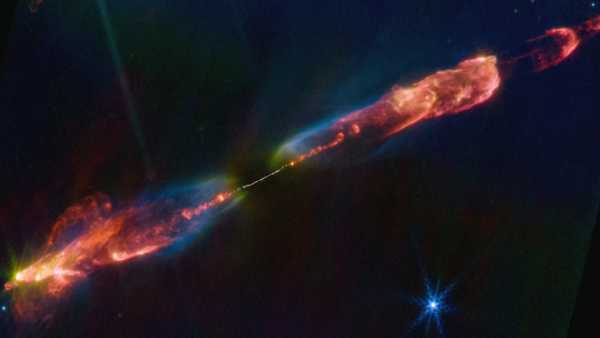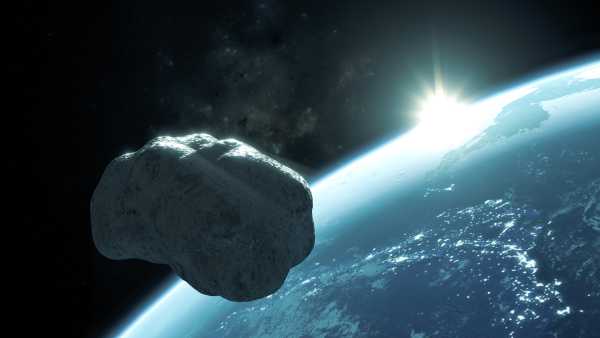
NASA released this image from the Athena lunar lander, which is looking at distant Earth while upside down. (Image credit: Intuitive Machines/NASA)
Houston-based Intuitive Machines' second attempt at landing on the moon ended the same way the first did: The lander came to rest on its side in a lunar crater, a new image confirms.
According to NASA, which has enlisted Intuitive Machines to deliver several scientific instruments to the moon as part of its Commercial Lunar Payload Services (CLPS) initiative, the lander ceased operations on Friday (March 7) when its battery ran out just 12 hours after the failed landing attempt.
Before the shutdown, the module's various instruments managed to transmit about 250 megabytes of data to NASA, including a dramatic photo showing the spacecraft's two protruding legs and the half-illuminated Earth majestically hovering in the distance.
It's unclear exactly what went wrong with the IM-2 mission and the Athena lander, which officially touched down on the near side of the moon at 12:30 p.m. ET Thursday (March 6) and ended its operations at 1:15 a.m. Friday. NASA said the craft landed more than 1,300 feet (400 meters) short of its planned landing site near the moon's south pole.
“While we are disappointed with the results of the IM-2 mission, we remain committed to supporting our commercial partners in their efforts to successfully accomplish the extremely challenging task of landing and operating on the Moon,” said Joel Kearns, associate administrator for exploration in NASA's Science Mission Directorate in Washington, D.C.
The Past (and Future) of Private Moon Landings
This was Intuitive Machines' second attempt at a lunar landing in two years. The company's first landing was on February 22, 2024, when the Odysseus spacecraft touched down and became the first American spacecraft to reach the lunar surface since Apollo 17 in 1972.

An uncropped image of the Athena lander observing Earth.
However, during the descent, Odyssey's landing lasers failed, causing a temporary loss of navigation needed to estimate distance to the surface. One of Odyssey's legs broke upon contact with the lunar soil, and the module fell on its side, limiting its functionality. The spacecraft ceased operations a week after landing, powering down before the cold lunar night.
NASA plans to continue collaborating with Intuitive Machines on two additional deliveries to the Moon: mission
Sourse: www.livescience.com





